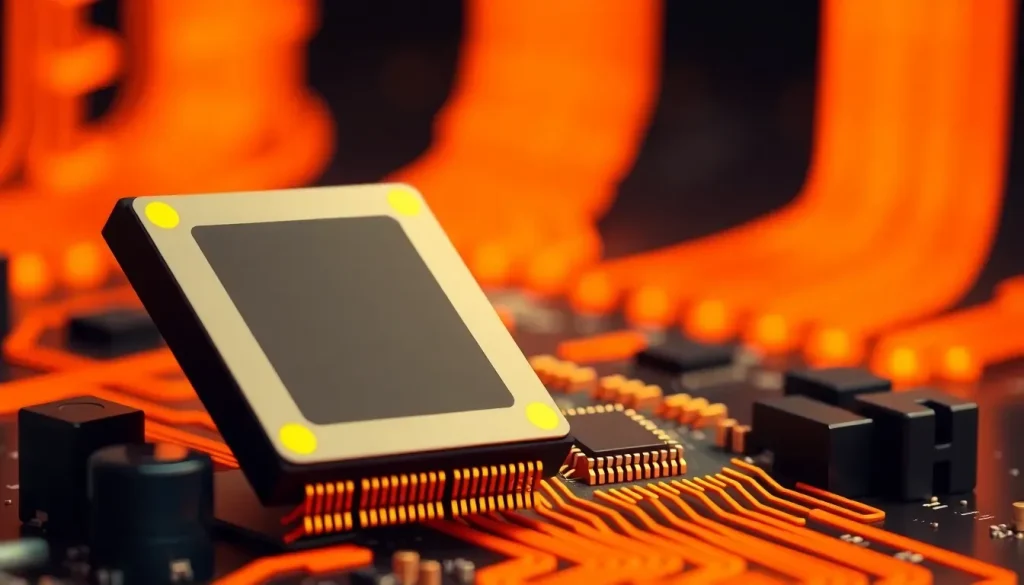Trump considers per-chip tariff on foreign electronics

In a move that could reshape the electronics market, President Trump is reportedly contemplating a new tariff strategy targeting foreign electronic devices based on their chip content. This proposed measure, as detailed in a recent report by Reuters, marks yet another chapter in the ongoing saga of U.S. trade policy and its implications for tech companies.
The discussion surrounding tariffs has been a focal point of Trump's administration, particularly as the U.S. grapples with its reliance on foreign chip manufacturers. Implementing tariffs based on the chip count in electronic devices could potentially have a significant impact on pricing, manufacturing practices, and ultimately, consumers.
Context of the Tariff Discussions
Since the onset of trade tensions in 2025, particularly with China, Trump's administration has actively sought to minimize U.S. dependence on foreign technology. In the early stages of this conflict, several essential electronics, including smartphones and computers, were temporarily exempt from tariffs. However, as the situation evolved, the administration hinted at a more comprehensive tariff system aimed at addressing the semiconductor shortage and boosting domestic manufacturing.
This latest consideration by the Trump administration is not entirely unprecedented. Previous proposals included various approaches to tariffs on electronics, but many were either abandoned or modified. Notably, Trump's comments about a potential 100% tariff on chips and semiconductors earlier this year signaled a significant shift in policy discussions.
Details of the Proposed Tariff Plan
The newly suggested tariff plan, according to sources, would impose a fee based on the estimated value of the chip content within foreign-made electronic products. This percentage-based tariff could lead to increased costs not only for imported devices but also for domestic products, as manufacturers may pass on the costs to consumers.
- Tariffs could increase prices for consumers.
- Domestic manufacturing may be incentivized to avoid tariffs.
- U.S. companies might need to adapt their supply chains.
- Potential exemptions for companies investing in domestic production.
- Impact on innovation and product availability in the market.
Economists have raised concerns about the broader implications of such tariffs, suggesting that they might stifle competition and innovation within the tech industry. The complexity of the semiconductor supply chain means that even domestic products could be affected by these new tariffs.
Implications for Tech Companies
Tech giants like Apple, which have significant manufacturing operations abroad, may face challenges under this new tariff framework. The administration's previous assurances to exempt companies committing to domestic production add an element of uncertainty. However, as the landscape continues to evolve, these promises may not hold firm.
Apple's CEO, Tim Cook, has been vocal in his support for U.S. manufacturing, but the shifting rules surrounding tariffs could complicate this relationship. Companies might find themselves in a precarious position, needing to balance compliance with the administration's policies while maintaining competitive pricing for consumers.
Reactions from the Industry
Industry experts and analysts have expressed mixed reactions to the proposed tariffs. While some believe that increasing domestic production is essential for national security and economic stability, others caution that tariffs could lead to higher costs for consumers and disrupt established supply chains.
Michael Strain, an economist, noted that the proposed tariffs could lead to a rise in prices, particularly for items that rely on imported components. The tech sector is particularly sensitive to such changes, as even minor adjustments to tariffs can have cascading effects on product pricing and availability.
Potential Exemptions and Incentives
As the administration considers its options, it is likely that specific exemptions will be offered to companies willing to invest in U.S. manufacturing. This could create a competitive landscape where companies are incentivized to relocate some production processes to avoid tariffs.
- Potential for reduced tariffs for companies investing in local manufacturing.
- Opportunities for collaboration with the government to boost domestic production.
- Increased pressure on companies to innovate and adapt their operations.
Furthermore, the administration's plan to take a stake in Intel exemplifies a broader strategy to bolster domestic chip manufacturing. Such initiatives might encourage other tech firms to explore similar partnerships or investments in U.S. facilities.
Conclusion: What Lies Ahead
The ongoing discussions around tariffs and trade policy are indicative of a larger shift in how the U.S. approaches its electronic manufacturing landscape. As companies navigate this uncertain terrain, their ability to adapt to shifting regulations and consumer demands will be crucial. The potential impact on pricing, availability, and innovation in the tech sector cannot be understated.
For those interested in the ongoing developments regarding tariffs and their implications for the tech industry, a recent video discussing Trump's tariff proposals can provide further insights:
Market Reactions and Future Considerations
As news of the proposed tariff spreads, market reactions are expected to fluctuate. Investors will be closely monitoring the responses from major tech companies and any changes in government policy. The tech sector's ability to adapt to these challenges will be crucial in determining its future trajectory.
Ultimately, while Trump's administration may aim to protect domestic manufacturing, the complexities of global supply chains mean that any tariff implementation will require careful consideration and strategic planning to minimize disruption and maintain market stability.
Relevant Accessories and Products
For readers interested in enhancing their tech experience, here are some noteworthy products available on Amazon:




Leave a Reply